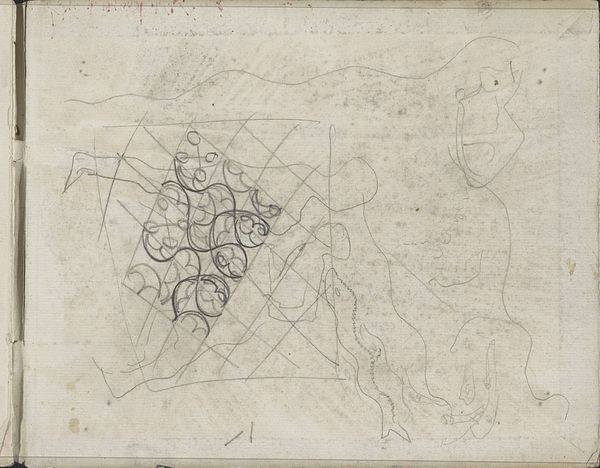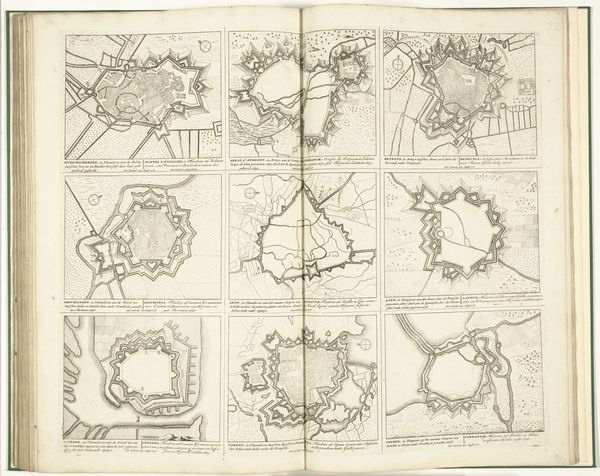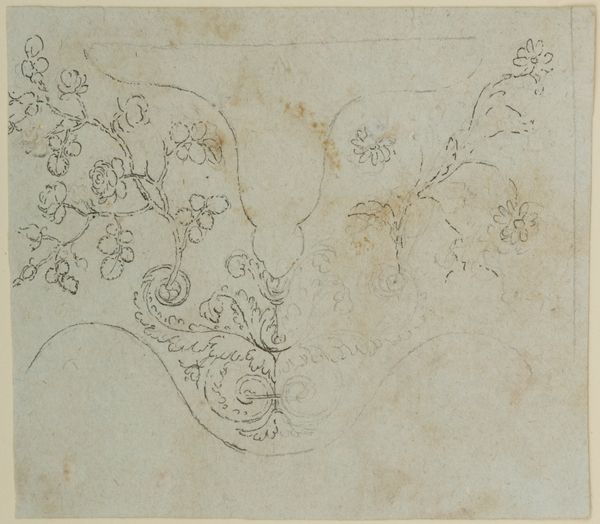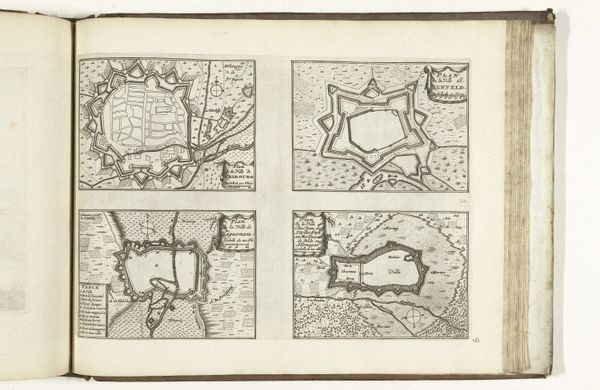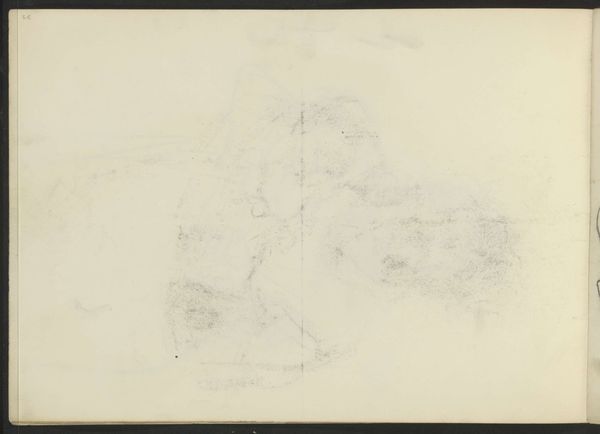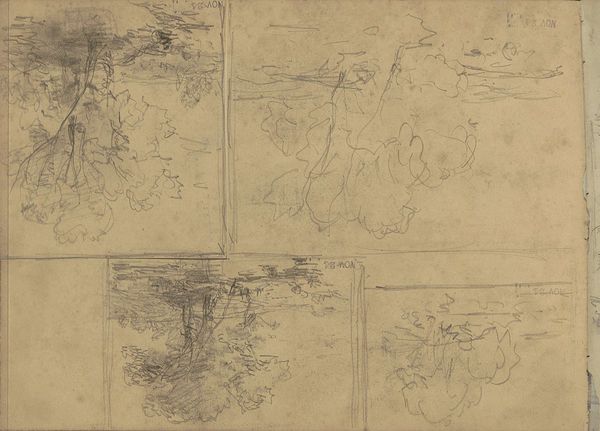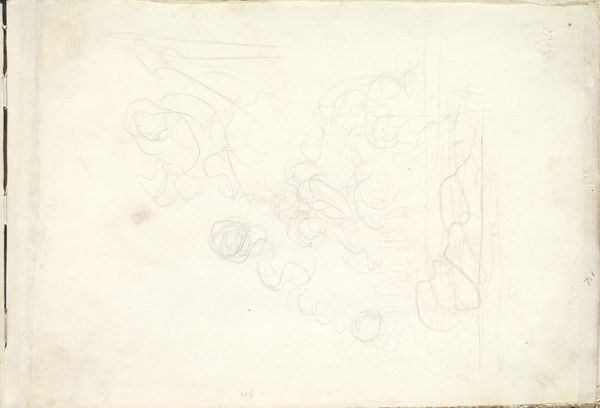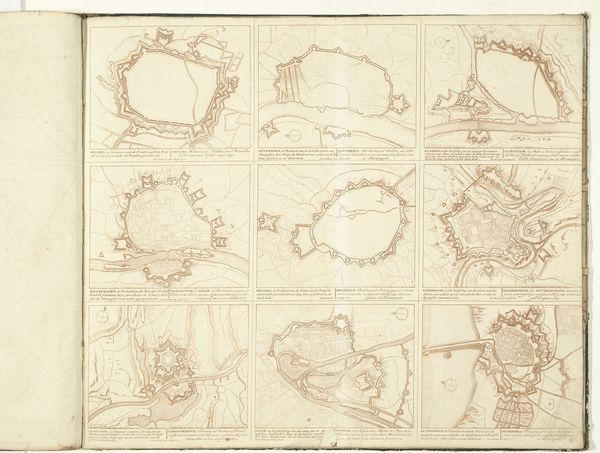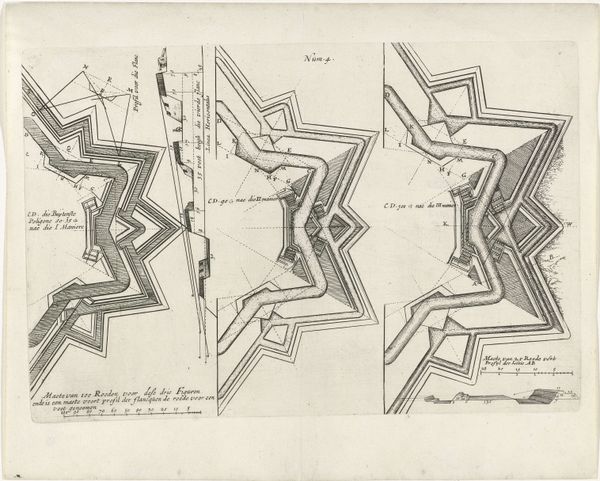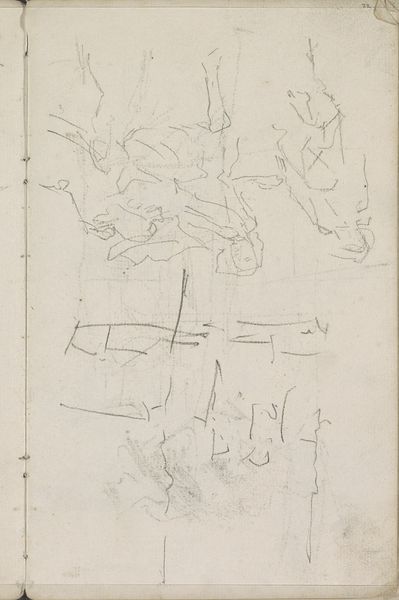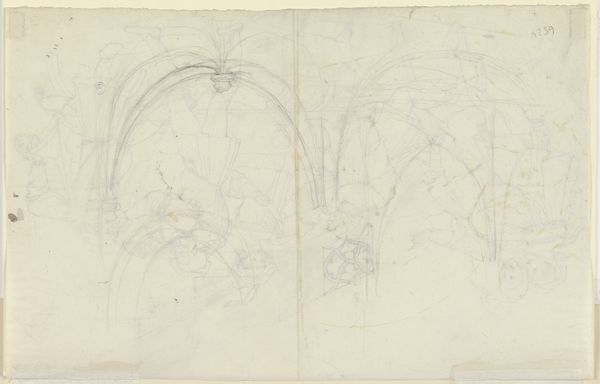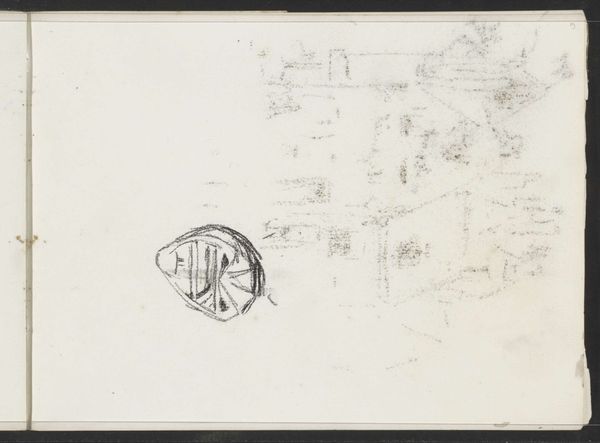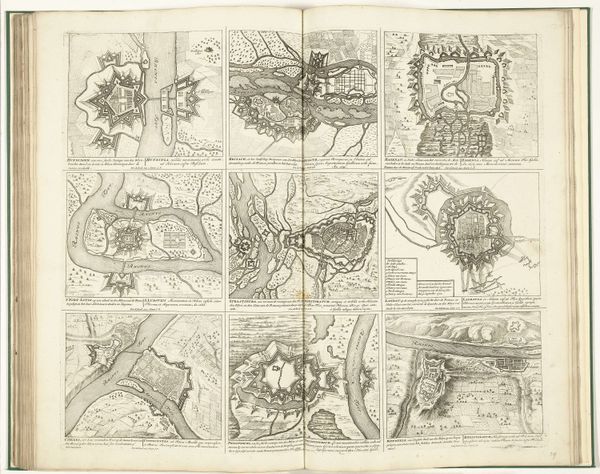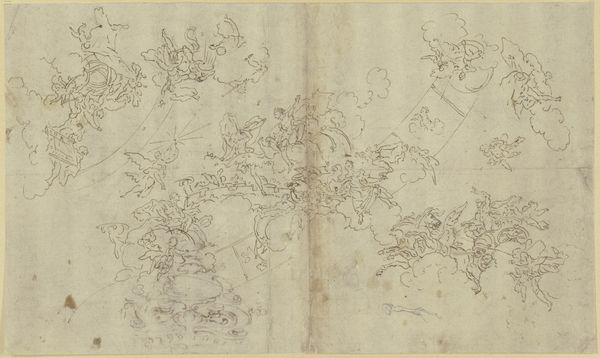
Copyright: Rijks Museum: Open Domain
Editor: We’re looking at “Decoratieve Motieven,” or "Decorative Motives," a pencil drawing on paper from around 1916-1945, housed at the Rijksmuseum. The sheet is divided into quadrants, each with a different sketch. There's something very raw and immediate about it, like peering into the artist's thought process. What stands out to you? Curator: I see the traces of institutional influence clashing with personal exploration. These geometric and stylized floral motifs resonate with the Art Nouveau movement, but also hint at something more utilitarian, like textile or wallpaper design. Consider how design schools were evolving during this period, and the pressure artists faced to create works relevant to industry and mass production. Do you notice the numerical annotations alongside some of the drawings? Editor: Yes, it looks almost like calculations or notes on proportions. Were artists being pushed towards more technical approaches? Curator: Precisely. The rise of industrial design and the Bauhaus movement emphasized functionality and precision. An artist creating “decorative motives” at this time was navigating a complex terrain. These sketches weren't just aesthetic exercises, but potentially designs intended for a larger, more public audience. Were they successful in realizing these designs, and if not, what does that say about the accessibility of the art world then? Editor: It's interesting to think about these as unrealized potentials, pointing to the economic and social forces at play. They make me wonder what this artist might have produced with more institutional support. Curator: Indeed. It's a reminder that the art we see in museums represents only a fraction of the artistic activity of any given period, and the market isn't always rewarding based on merit. We can imagine other works that should be shown as well, and advocate for expanding the idea of art to include broader social relevance. Editor: I hadn’t considered the implications of “decorative” in this context, but that’s opened my eyes to seeing the unseen structures behind artistic choices. Curator: Exactly, understanding art in this sense invites reflection of a cultural milieu.
Comments
No comments
Be the first to comment and join the conversation on the ultimate creative platform.
